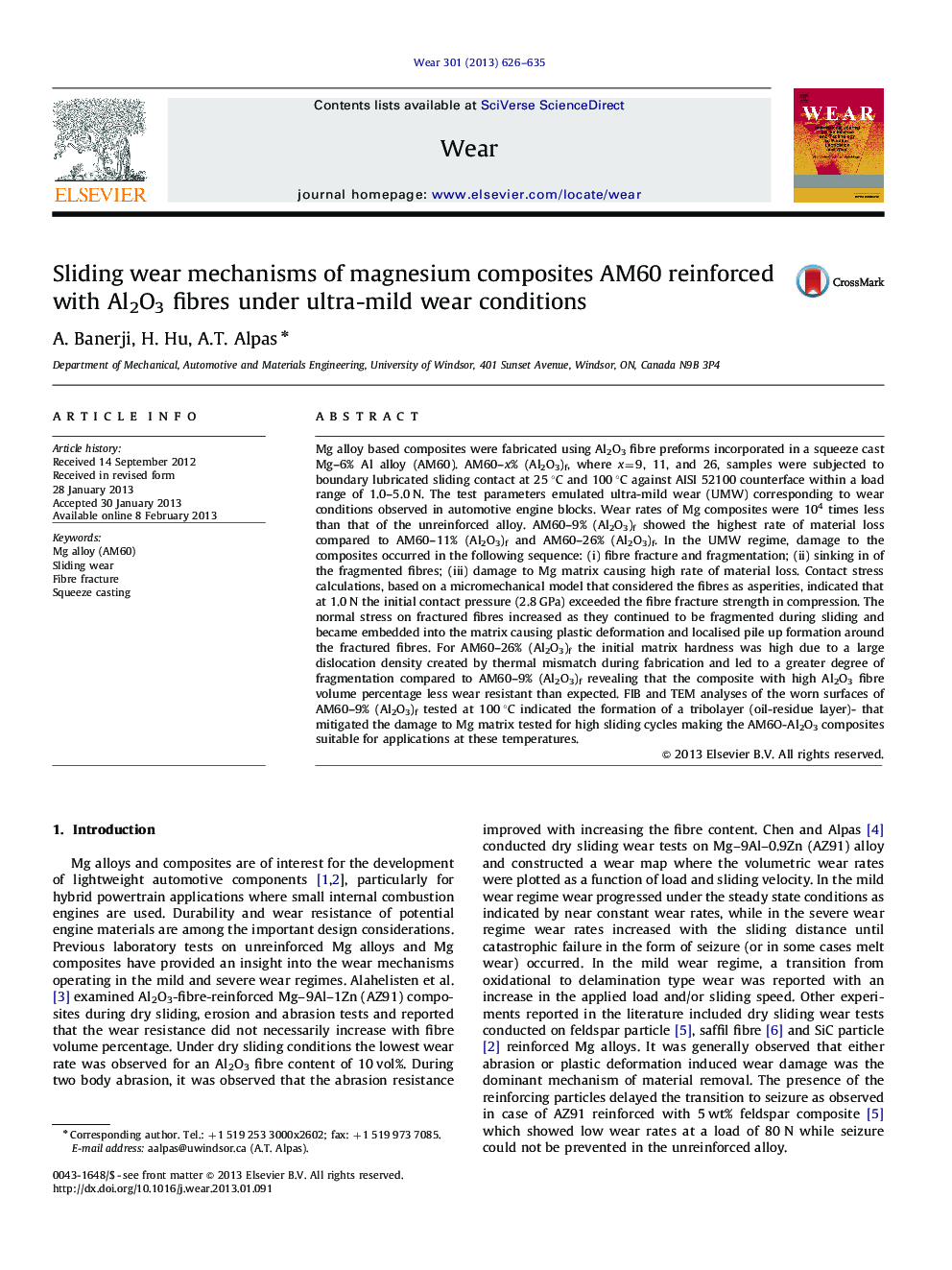| کد مقاله | کد نشریه | سال انتشار | مقاله انگلیسی | نسخه تمام متن |
|---|---|---|---|---|
| 617573 | 1455001 | 2013 | 10 صفحه PDF | دانلود رایگان |

Mg alloy based composites were fabricated using Al2O3 fibre preforms incorporated in a squeeze cast Mg–6% Al alloy (AM60). AM60–x% (Al2O3)f, where x=9, 11, and 26, samples were subjected to boundary lubricated sliding contact at 25 °C and 100 °C against AISI 52100 counterface within a load range of 1.0–5.0 N. The test parameters emulated ultra-mild wear (UMW) corresponding to wear conditions observed in automotive engine blocks. Wear rates of Mg composites were 104 times less than that of the unreinforced alloy. AM60–9% (Al2O3)f showed the highest rate of material loss compared to AM60–11% (Al2O3)f and AM60–26% (Al2O3)f. In the UMW regime, damage to the composites occurred in the following sequence: (i) fibre fracture and fragmentation; (ii) sinking in of the fragmented fibres; (iii) damage to Mg matrix causing high rate of material loss. Contact stress calculations, based on a micromechanical model that considered the fibres as asperities, indicated that at 1.0 N the initial contact pressure (2.8 GPa) exceeded the fibre fracture strength in compression. The normal stress on fractured fibres increased as they continued to be fragmented during sliding and became embedded into the matrix causing plastic deformation and localised pile up formation around the fractured fibres. For AM60–26% (Al2O3)f the initial matrix hardness was high due to a large dislocation density created by thermal mismatch during fabrication and led to a greater degree of fragmentation compared to AM60–9% (Al2O3)f revealing that the composite with high Al2O3 fibre volume percentage less wear resistant than expected. FIB and TEM analyses of the worn surfaces of AM60–9% (Al2O3)f tested at 100 °C indicated the formation of a tribolayer (oil-residue layer)- that mitigated the damage to Mg matrix tested for high sliding cycles making the AM6O-Al2O3 composites suitable for applications at these temperatures.
Journal: Wear - Volume 301, Issues 1–2, April–May 2013, Pages 626–635